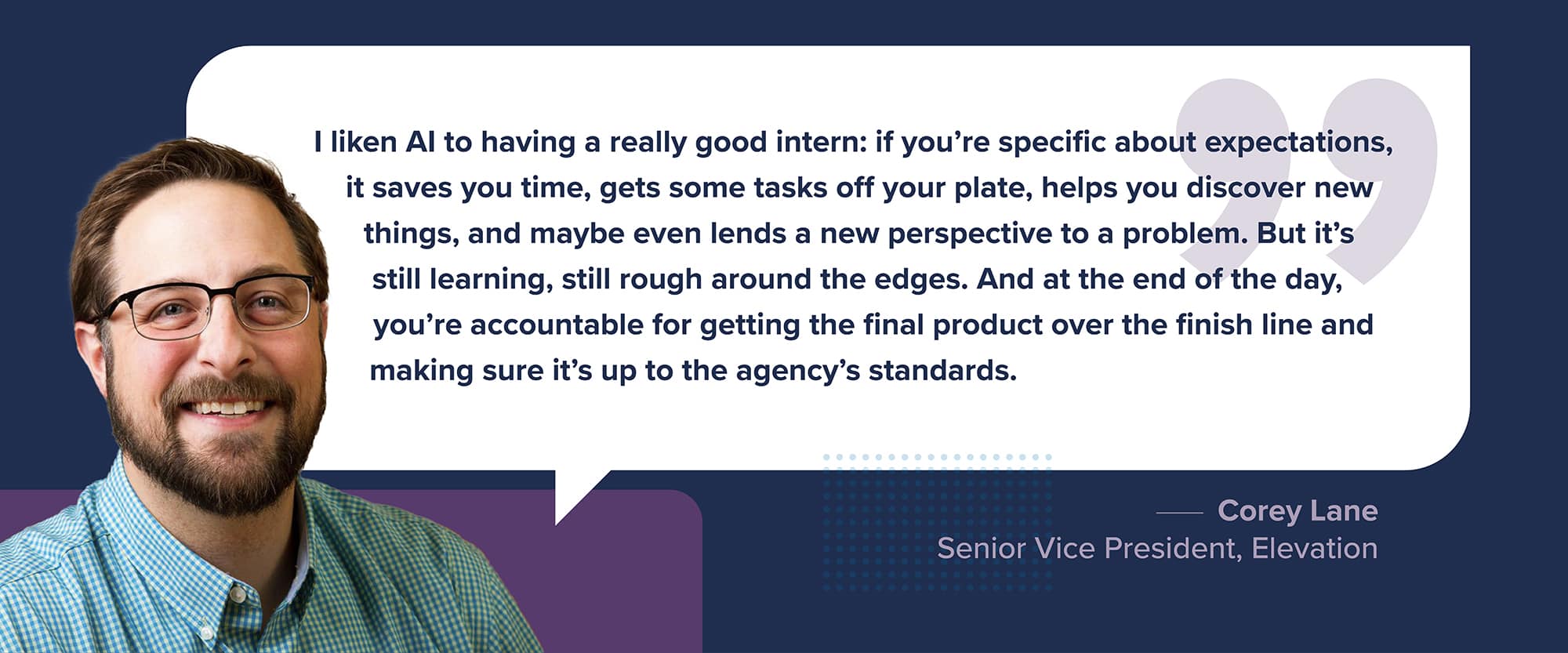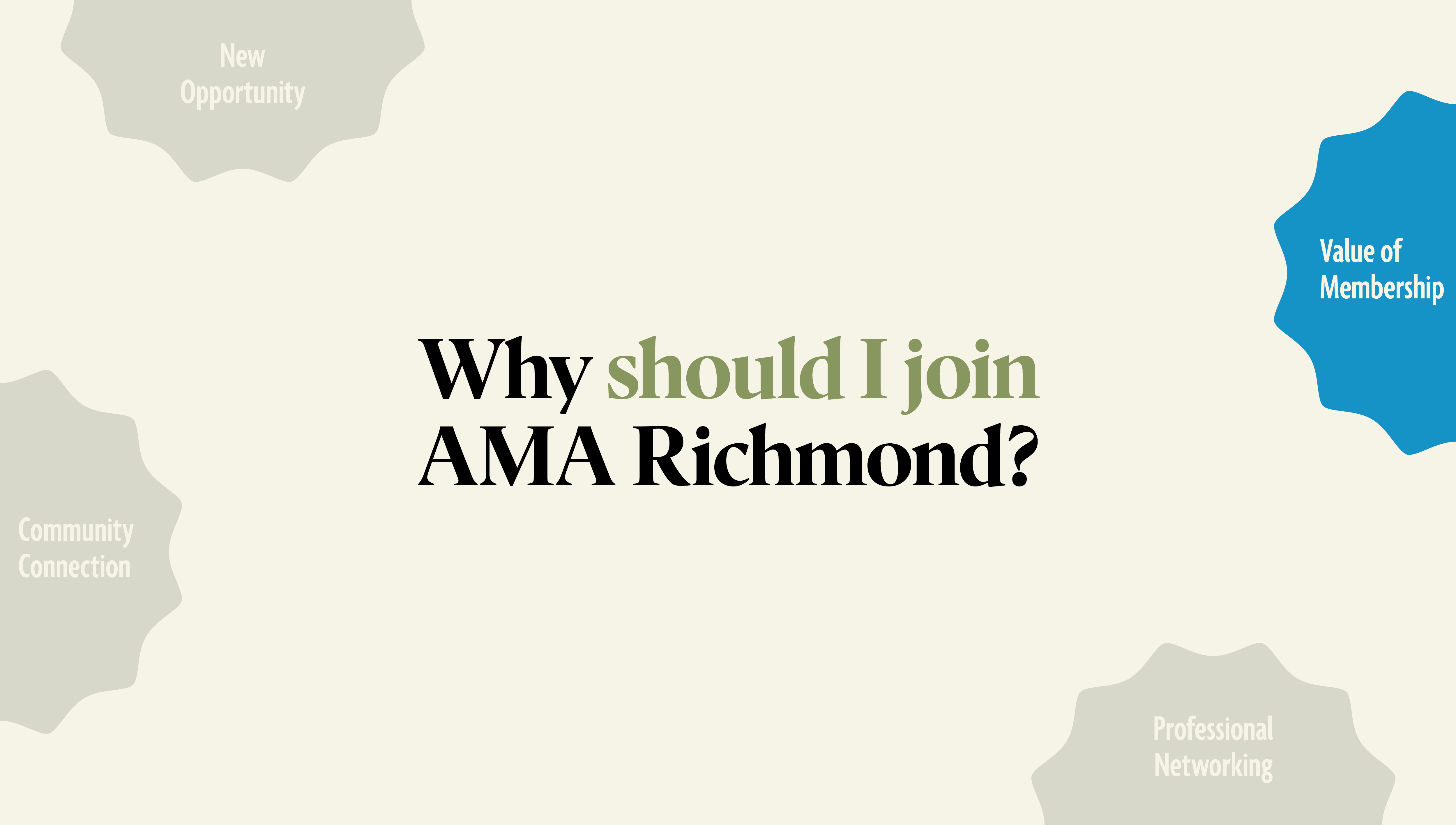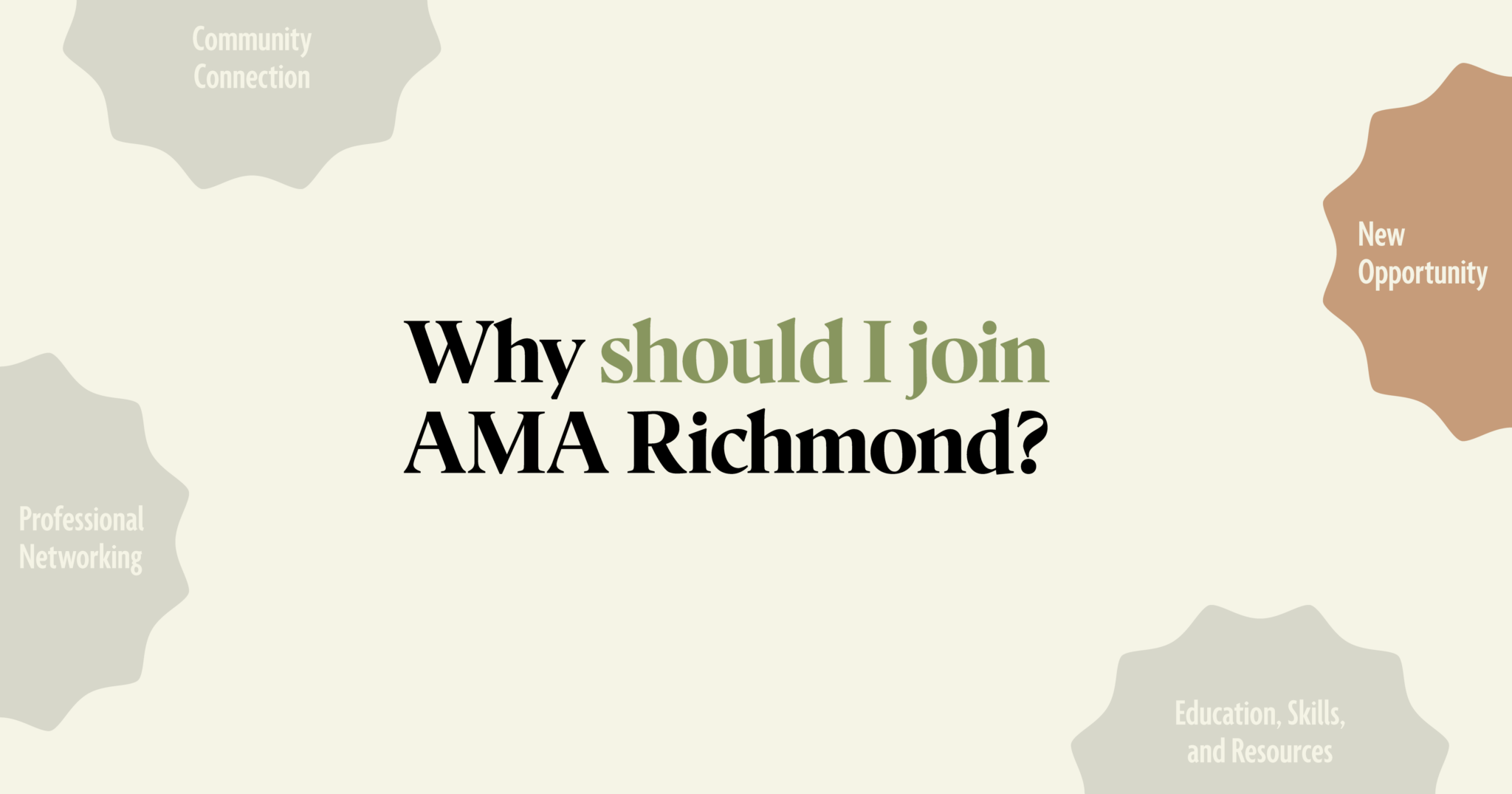Marketers are wizards. We know the ins and outs of our respective industries, dance with the creative process of producing “on brand” (and entertaining) content, and we’re pretty fun at parties, too.
As we enter a new era in the digital age, though, we’re also facing tough questions about the use of technology in our art & science blend. At the top of the list is artificial intelligence, like ChatGPT and other GenAI. There are discussions aplenty about its usefulness and accuracy — and its ethical properties too.
Let’s get real for a moment here — this conversation is far from over. We’re in it for the long haul, and while resistance to technology will always be a thing (people mocked the idea of the horseless carriage), learning how to use the innovative tools of today will make us better suited and prepared for changes coming tomorrow.
Let’s get into it and talk about ChatGPT — what it is, how it works, how our fellow marketers leverage this tech, and where the benefits and drawbacks lie.
ChatGPT: The basics

ChatGPT is an AI system capable of using its intelligence to process, grasp, and generate responses that resemble the natural ways in which humans communicate.
Its responses are fast, often spewing out information in seconds flat.
But how does this all work?
This form of artificial intelligence relies on a sophisticated transformer-based neural network fueled by an insanely large data pool. Thanks to this vast knowledge base, the AI can efficiently analyze information and craft well-informed responses.
What makes this technology even more remarkable is its ability to grasp context, understand syntax, and identify word associations.
By carefully (and quickly!) considering these elements, ChatGPT effortlessly emulates the nuances of human speech and writing, resulting in human-like responses. It’s this thoughtful attention to detail that contributes to the program’s natural and engaging conversational capabilities, making interactions with the AI an incredibly immersive experience.
Such an exciting synopsis! But how exactly can we use this tech?
Chat GPT: The benefits

Maneuvering the nuances of artificial intelligence like ChatGPT takes time, but here are a few ways to use it to make your creative process better streamlined:
As a springboard for content ideation:
Writing can often be an overlooked piece of the creative puzzle. It’s not simply throwing words on a page, and voila! Magic! It’s so much more than that. In this sense, writing a draft can be one of the most challenging parts of content creation.
ChatGPT provides backbone support when you’re sick of looking at a blinking cursor on a blank page. Take it from our fellow AMA member, Casey Prentice, an account director at Hodges Partnership, who frequently uses this tech to get started:
“Our social media philosophy revolves around batch planning content, which allows us to not only focus on writing several pieces of content in one go but getting approval on several days or weeks of content at a time. But, when you’re writing that many posts at a time, you can get stuck, so our content creation teams have used ChatGPT for inspiration when they need a fresh angle to go after. That allows us to tap into outside thinking that we can then put our own flair and touches on.”
– Casey Prentice, Account Director at Hodges Partnership
For effortless advanced data analysis and automation
Recently, the creators of ChatGPT introduced a new feature called Code Interpreter, which takes things to a whole new level. With this feature, ChatGPT can understand and execute complex code to perform advanced data analysis. It’s like having a data scientist right at your fingertips.
Andrew Miller, Co-Founder and VP of Strategy at Workshop Digital, is leaning into this feature as a means to automate some of their existing processes,
“We’re really digging into more advanced use cases for the new ChatGPT Code Interpreter capabilities for advanced data analysis. We’re also testing new plugins and API integrations via Zapier to automate some of our existing processes in other platforms such as Salesforce and Google Sheets.”
To write those complicated or otherwise tedious emails
ChatGPT can be an invaluable tool in streamlining your everyday communication process.
Writing emails, especially when the content may seem tedious, can be a time-consuming task that drains your energy and creativity. However, with ChatGPT at your disposal, you can transform it into a seamless and efficient process.
For Identifying trends or patterns
In the realm of account leadership, harnessing cutting-edge tools can make all the difference in staying ahead of the game. Enter ChatGPT, an AI powerhouse that has become a go-to resource to conduct research and strategy for Corey Lane, Senior VP at Elevation Advertising.”
“In my capacity as an account leader, I primarily use ChatGPT for research and to add value to strategy. It can streamline much of the preliminary background and category research I do with prospective and new clients and identify anomalies or trends that we’ll dig into more deeply with traditional research methodologies…
One of my go-to exercises is telling ChatGPT to respond as a comedian and asking it to write a stand-up bit about my client’s product or brand. It’s rarely funny, but it’s a roundabout way to discover the tropes and truths about the category. It’s led to some great insights and strategic jumping-off points for our creative teams.”
To offload some tasks here and there
Need to create a content calendar quickly for a social media client? How about analyze data sets or create an email template? ChatGPT can do the heavy lifting, so you can worry about refining and perfecting the output.

While all these benefits sound fine and dandy, we need to talk about the drawbacks of ChatGPT, too.
ChatGPT: The drawbacks
Like any powerful tool, ChatGPT has its limitations and potential pitfalls that users must be aware of.
Responses may sometimes be inaccurate
One of the main concerns with ChatGPT is that the dataset it draws from has a specific knowledge cutoff, which means it may not be up to date with the most current information. This limitation becomes more critical if someone tries to use ChatGPT for topics related to journalism or academic research.
Though, as this tech improves, we’ll most likely see improvements within this

Responses may sometimes be driven by bias
When engaging with ChatGPT, you can experience a truly interactive conversation as the AI intelligently processes your input and generates relevant answers derived from the wealth of accessible data. But this data pool can be driven by bias from time to time. Why is that? Because ChatGPT is trained on very real and very human inputs, which may be prone to biases, in some cases, implicit biases.
Here’s what Andrew from Workshop Digital, had to say about this:
“Our team is digitally very literate, but we remind them to “trust but verify” any GenAI responses that are presented as facts. We don’t let our teams upload confidential or proprietary data either, lest they make their way into the training sets and future outputs. Finally, we advise our team to watch out for algorithmic bias in the inputs and outputs to make sure the GenAI tools are providing fair, equitable, accurate responses.”
– Andrew Miller, Co-founder and VP of Strategy at Workshop Digital
There are ethical concerns about the tech
Within the moral dilemma of using ChatGP, it’s not just about selling or using the content as your own. ChatGPT can be used to mimic the writing style of individuals, potentially leading to impersonation and identity theft.
Other ethical concerns are also valid — like the loss of jobs in several areas. When ChatGPT can work fast and efficiently, it may eliminate the need for some positions.
Additionally, any over-reliance on this tech can lead to a decline in critical thinking and creativity, as people may depend too heavily on technology for decision-making and problem-solving.
It can’t replicate the human experience
While ChatGPT is great for getting started or checking ourselves along the way, ultimately it can’t replace the human experience that we relate to. When working on creative, the idea is to inspire and motivate. There’s nothing better than drawing on our own experiences to produce content that resonates with others facing the human experience. The best content (whether that be video, content marketing, social media posts, or ads) invokes emotion and releases feelings of camaraderie.
“Elevation hasn’t established a formal policy for using AI, but what’s understood is that these tools should be informing the inputs to the creative process, never the outputs. They can be super helpful to organize information, help us present research, and inspire strategy, but we’re never going to ask them to solve the problems for us. We all know that AI can complement and maybe even enhance our process, but the value that our clients hire us for is our specific human experience, expertise, and craft.”
– Corey Lane, Senior VP at Elevation Advertising
“Our industry needs nuance, humor, and empathy – traits that are the basis of human creativity – to persuade and convince our audiences. Our clients hire us for those capabilities, not what applications and technologies we use daily.”
– Lauren Sweeney, Founder of Dotted Line Agency
ChatGPT is only as powerful as the way in which you use it
You’ve probably heard the saying, “Garbage in, garbage out.” The same is true for using tools like ChatGPT and GenAI. If you’re looking to get great results using them, you need to be versed in how the tools like to be prompted. Here’s what Corey Lane and Lauren Sweeny had to say on this:
“Whether visual generators or verbal generators, these tools are only as powerful as how you use them. So just like any other creation tool in the agency ecosystem, there’s a learning curve to go from ‘Hm, that’s kinda cool’ to ‘Here’s what I need it to do.’ And with the pace of AI development, we’re all learning as we go and figuring out how they can add value and where they are (currently) falling flat.”
– Corey Lane, Senior VP at Elevation Advertising
“We see the application of artificial intelligence as a problem-solving tool, not replacing human thought and creativity that defines the best agencies. To start, AI is only as good as the information that it’s given or the clarity of what it’s asked to do, which demonstrates one limitation of any out-of-the-box thinking; it’s also proven incapable of filtering out inaccurate resources in its responses and can deliver faulty prediction and analysis.”
– Lauren Sweeney, Founder of Dotted Line Agency
Using ChatGPT: Some extra helpful tips
- Never pass off AI-generated content as your own if you haven’t adjusted the copy or added your own flair
- Follow OpenAI on social media to stay up to date about best practices and get new ideas for how to use the tools
- When using ChatGPT, give clear instructions to get the best outputs
- Always verify information on your own to prevent presenting inaccuracies
- Experiment with different prompts and keep a running list of what works in a Google Doc
- Keep an eye out for any biases you may encounter
Transparency: How I used ChatGPT in this piece
- To springboard the section on ChatGPT: The basics. I needed a clear and concise definition, and ChatGPT gave a great template to work off of
- To double-check definitions and ensure some of the sentence structures made sense
- For a final proofread of this piece




